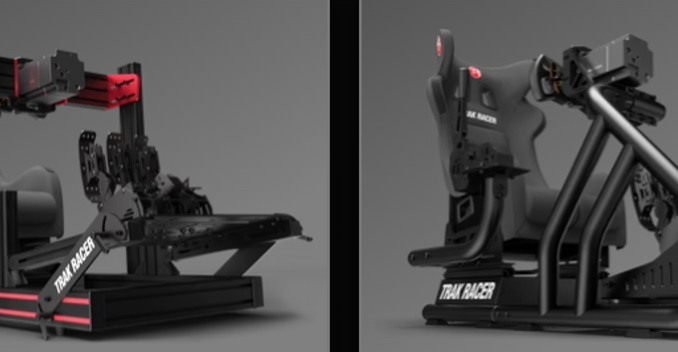
Rev your engines! 🏎️ Experience top-notch racing simulations, the ultimate thrill for racing enthusiasts. Don’t miss the ride of your life! 🏁
Racing simulators have evolved from niche gadgets for dedicated enthusiasts into mainstream entertainment platforms that offer the exhilarating experience of high-speed motorsports. The allure of racing simulators lies not only in their ability to replicate the adrenaline rush of real-life racing but also in their capacity to immerse players in an environment where skill, strategy, and split-second decision-making are key. As technology advances, these simulators have become more sophisticated, offering players a near-authentic racing experience. This article delves into the world of racing simulators, exploring their history, technological advancements, and the unique experiences they offer.
The Evolution of Racing Simulators
The origins of racing simulators can be traced back to the early days of video gaming. In the 1970s and 1980s, arcade racing games like Night Driver and Pole Position laid the groundwork for what would eventually become the racing simulator genre. These early games offered rudimentary graphics and simple controls, yet they captured the imagination of gamers by allowing them to experience the thrill of speed in a virtual environment.
As technology progressed, so did the complexity of racing games. The 1990s saw the introduction of more advanced systems with improved graphics and physics engines, enabling a more realistic driving experience. Games like Gran Turismo and Need for Speed became household names, offering players a vast selection of cars and tracks to choose from. These games, while not yet true simulators, marked a significant step towards the realistic racing experiences we see today.
The turn of the millennium brought a new era for racing simulators, driven by advancements in computing power and software development. Titles like iRacing and rFactor emerged, offering players a highly realistic and detailed simulation of racing. These simulators were designed with input from professional racers and engineers, ensuring that the physics, car handling, and track details were as close to real life as possible. This shift towards realism marked the transition of racing games from casual entertainment to serious training tools for aspiring and professional racers.
The Technology Behind Racing Simulators
The core of any racing simulator lies in its physics engine, which dictates how the virtual cars behave on the track. Modern simulators employ complex mathematical models to simulate the forces acting on a car as it accelerates, brakes, and corners. These models take into account variables such as tire grip, suspension dynamics, aerodynamics, and weight distribution, ensuring that the virtual car responds in a manner consistent with its real-world counterpart.
One of the most significant technological advancements in racing simulators is the use of force-feedback steering wheels and pedal sets. These peripherals provide tactile feedback to the player, mimicking the sensations experienced when driving a real car. For example, when a player turns the wheel, they can feel the resistance from the tires as they grip the road, or the loss of control when the car begins to slide. This level of immersion is crucial for creating a realistic racing experience and is one of the reasons why many professional drivers use simulators for training.
Another important aspect of modern racing simulators is the detail and accuracy of the tracks. Laser scanning technology is often used to create highly accurate digital replicas of real-world tracks. This process involves using lasers to map the surface of a track in minute detail, capturing every bump, camber, and elevation change. The resulting digital track is virtually identical to the real thing, allowing players to experience the same challenges and nuances that professional drivers face.
The Appeal of Racing Simulators
Racing simulators appeal to a wide range of people for various reasons. For some, they offer a safe and affordable way to experience the thrill of high-speed racing without the inherent risks of real-world motorsports. For others, simulators provide a platform for honing driving skills, whether for recreational purposes or as part of a professional training regimen.
One of the unique aspects of racing simulators is the level of customization and control they offer. Players can adjust everything from the car’s suspension settings to the weather conditions on the track, allowing them to tailor the experience to their preferences. This level of control is particularly appealing to those who enjoy the technical aspects of racing, as it allows them to experiment with different setups and strategies.
Moreover, racing simulators have a strong community aspect. Online multiplayer modes allow players to race against others from around the world, participating in leagues and tournaments that mimic real-world motorsport events. These online communities often feature a mix of casual players and serious competitors, fostering a sense of camaraderie and competition. The rise of eSports has also seen racing simulators take center stage, with professional sim racing competitions drawing large audiences and offering substantial prize money.
The Future of Racing Simulators
The future of racing simulators looks promising, with ongoing advancements in technology poised to take the experience to new heights. Virtual reality (VR) is one area that is set to revolutionize the genre. VR headsets provide an unparalleled level of immersion, placing players directly in the cockpit of their virtual car. The ability to look around the cockpit, check mirrors, and gauge the distance to other cars adds a new layer of realism that traditional screens cannot match.
Additionally, the integration of artificial intelligence (AI) into racing simulators is opening up new possibilities. AI drivers can be programmed to mimic the behavior of real-world racers, providing players with a challenging and realistic opponent. Furthermore, AI can be used to analyze a player’s driving style, offering personalized feedback and suggestions for improvement.
The rise of cloud gaming is another trend that could impact racing simulators. By offloading the processing power required for high-end simulations to the cloud, developers can create even more detailed and expansive racing experiences that are accessible to a broader audience. This shift could also enable cross-platform play, allowing players on different devices to race against each other seamlessly.
Conclusion
Racing simulators have come a long way from their humble beginnings, evolving into highly sophisticated platforms that offer a realistic and immersive racing experience. With advancements in technology, the line between virtual and real-world racing continues to blur, offering exciting opportunities for both casual gamers and professional drivers alike. As the genre continues to evolve, racing simulators are poised to remain at the forefront of gaming innovation, offering the thrill of motorsports to anyone with a passion for speed.








